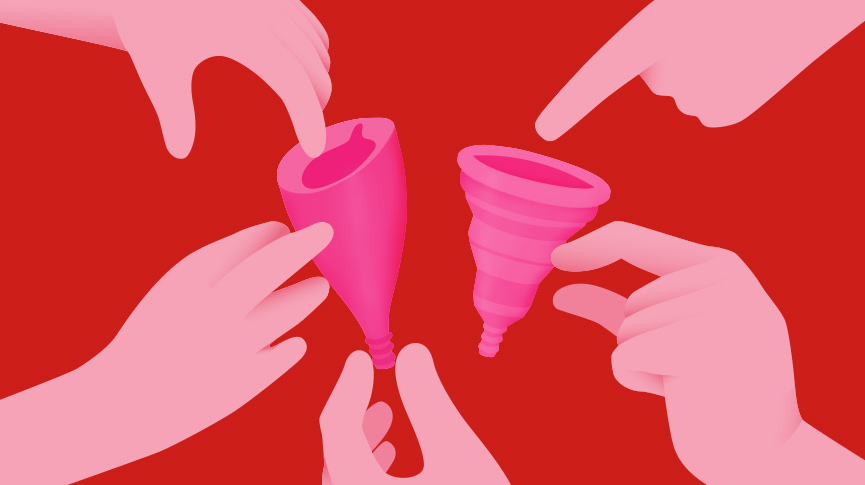A Brief History of Period Products

Since periods have been around, women have had to find ways to cope with them (although women in previous centuries tended to have much fewer periods on average than modern women because they were pregnant often and from a young age, and were less well-nourished).
While period acceptance and technology has gone through a significant evolution in the last fifty years, for much of history, women have had to deal with not only the discomfort of inefficient menstrual products, but the stigma that came with menstruating. Unfortunately, many females around the world still lack access to sanitary period products, and period poverty threatens access to such essential products even in developed countries.
Here’s a brief timeline of the types and innovations in period products that will make you grateful for advancements in period technology.
Ancient World
Egyptians
Ancient Egyptians were one of the earliest inventors of tampons, using a material made from the fibers of a water plant called papyrus to stem the flow.
Romans
Ancient Romans fashioned pads out of wool, which is the second-most absorbent material after cotton. Wealthier women used pads specifically cut for menstruating, while poorer women probably cut pieces out of old garments or rags.
Greeks
Along with homemade rags, women in Ancient Greece may have also used “motos,” or small pieces of lightweight wood wrapped with lint, to stop bleeding. However, it is unclear if they used “motos” for period purposes or to delay their periods.
Medieval Europe
Rags were used for menstrual bleeding, but it was difficult to keep them in place since underwear wasn’t widely available. Some women wore shorts under their garments to keep the rags in place, or simply wore red to avoid stains. Sphagnum cymbifolium, colloquially known as “blood moss,” is an extremely absorbent plant used for toilet paper that women in medieval England also used to fill menstrual pads. Blood moss was used for managing battle wounds, but there is speculation that the name could have originated from its use by menstruating women.
Victorian Era
The late 1800’s birthed the Hoosier Sanitary Belt, which was a belt that could be pinned to washable cloth pads. The sanitary belt remained popular through the 1890s to the 1970s, although Johnson & Johnson introduced the first disposable pads – known as lister’s pads – two years before the Hoosier belt in 1888, which contained highly absorbent pulp bandages. Around this time, doctors started learning about infection, and concern regarding unsanitary conditions prompted better menstruation products.
The Invention Of Modern Tampons
Tampons were officially defined by The Nurse’s Dictionary of Medical Terms and Nursing Treatment Compiled for the Use of Nurses in the early twentieth century as “plugs of antiseptic wool surrounded by gauze” with a string for removal, to be inserted into the vagina. Tampons were occasionally prescribed in the 19th century by doctors to absorb non-menstrual vaginal discharge, and were typically sewed by nurses in hospitals. Tampons were not available for purchase outside of hospitals until the 1930s, when Colorado physician Earl Haas created a cardboard applicator tampon specifically used for menstrual blood. He had been inspired by a female friend who inserted a sponge into her vagina to handle her period, and had decided to create an alternative to bulky menstrual pads.
The biggest innovation Haas brought was the invention of the applicator, since women at the time were less comfortable with manually inserting a tampon into the vagina due to sexual taboos and stigma surrounding menstrual blood. Haas officially patented the design for “Tampax” (Tampon + Vaginal Pack), with two sliding cardboard tube applicators, in 1931 and released it to the general population.
Applicator-Free Tampons
O.B. released their line of applicator-less disposable tampons across Europe in 1950, which became – and remain – the more popular choice since they’re smaller and more eco-friendly. They can also be slipped more discreetly into pockets or purses. They weren’t released in the U.S. until the 1970s.
Menstrual Cups
The first “modern” menstrual cups, similar to the ones we use today, were invented in 1937. Made out of latex rubber that fit the vagina to collect menstrual blood throughout the day, the first patented cup was created to allow women to wear tight, slim-fitting clothes without having to constantly fear belts or pads showing. However, a shortage of latex rubber due to the second world war ground production to a halt, and it didn’t make a comeback until the late ‘60s.
Modern-Day Options
Today, women in most countries have a range of sanitary and eco-friendly options to choose from. Disposable pads are much thinner and have designs that adhere well to undergarments. Tampons with and without applicators are widely available in a variety of unique designs such as those built for athletic performance, light flow, heavy flow… you name it. Menstrual cups boast refined designs and materials that are more durable, flexible, and comfortable. Whatever product best fits your specific needs is up to you, as long as you feel comfortable and are using the products safely.

Clara Wang is a freelance writer based in Nashville, TN but often found abroad. She mostly muses about the three best things in life: Food, sex, and music. Her work has been featured in publications such as Eater Austin, Eater Nashville, Giddy, Buzzfeed, Refinery29, the Austin Chronicle, the Austin American Statesman, and the Daily Dot.




